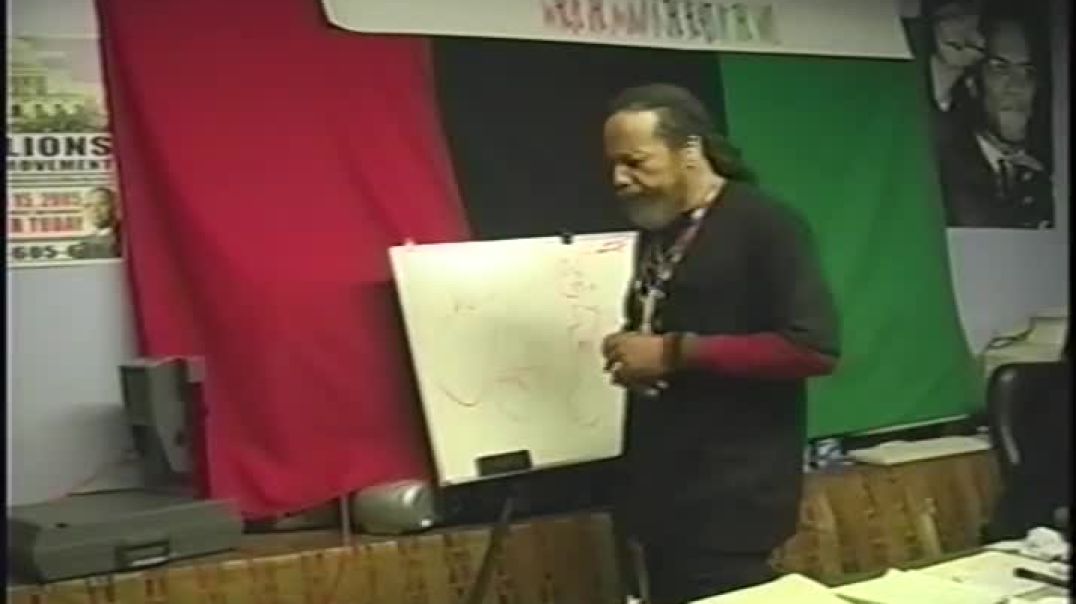- General Videos
- Music
- Economics
- Health
- Travel & Events
- History
- Psychology
- Spirituality
- Movies
- News & Politics
- Kmtyw Combat Sciences
- Ɔbenfo Ọbádélé Kambon Videos
- Ɔbenfoɔ Kamau Kambon: Black Liberation Philosophy
- Science, Tech, Engineering and Math
- Permaculture
- Self-Sustainability
- Living Off Grid
- Yoruba Language Learning
- Education
- Mmɔfra Adesua
- Nana Kamau Kambon Playlist
- Livestream
- Komplementarity Kouples and Revolutionary Singles
- Abibitumi Film Series
- Decade of Our Repatriation
- Live
FQM's Conservation Farmers Project Bumper Harvest - Zambia
Farmers in Solwezi, Mushindamo and Kalumbila Districts of North-Western Province are projecting a bumper harvest for the 2019/2020 farming season, thanks to the conservation farming techniques introduced by First Quantum Minerals under its Agricultural Livelihoods Project.
Through its Kansanshi Foundation, the mining company has provided training and technical support to close to 40,000 farmers and early agricultural input delivery to 7,000 farmers, whose yields have grown from an average of six 50kg bags a lima using conventional techniques in 2010, to a maximum of 56 bags a lima and an average of 21 bags in the 2018/2019 farming season.
Until 2010, the 7,000 farmers were mostly subsistence farmers. Now they are all farming for profit, which makes them emerging commercial farmers.
Among that many farmers the mine has trained in conservation farming, is Chief Mumena of the Kaonde people of North-Western Province, who is expecting to harvest 50 bags a lima at the end of this farming season.
“When you are following the methods of Conventional farming, even when you do a very good job, the best you would get would be 20 bags. With maximum management, you would be getting somewhere about 30 to 35 bags. That’s what the average people were doing, but all those standards are far too high because where we are, you can’t afford all those. Most of the farmers are subsistence farmers.
“So far, we are able to testify to the fact that conservation farming has really helped to improve our yields. It’s cost-effective, but at the same time you also save on space; you follow very simple regulations; you do it on time, with joy, with minimum wastage; you follow the mulching practices. Once you follow these, and all those that have been following the systems that have been taught, have done very well. When you look at a field like mine, I am expecting that by the time we harvest, a lima(a quarter of a hectare) will give me an average of about 50 bags by 50kg,” said Chief Mumena.
The traditional leader said that thanks to FQM’s conservation farming project, North-Western Province is quickly turning into Zambia’s food basket, adding that because of the favourable rains the province has been receiving, it will play a key role in ensuring that the country is food secure.
“They have been to every district in the North-Western Province through their flagship conservation farming project. And I would want to encourage all the investors that come through to realise that conservation farming is more spiritual than anything else. You are giving back to the land and the community where you are getting your fortune. And so, you better acknowledge and be grateful to the people that received you.
“In terms of giving back to the community, Kansanshi and First Quantum Minerals are doing a great job in spreading food security through this flagship project. And we would encourage as many investors as possible to find a way,” he added.
Kansanshi Foundation supervisor in charge of conservation farming training and operations of at FQM, Maximillian Katanga, said that since project inception in the 2010/2011 season, close to 40,000 farmers had benefited from the conservation farming programme.
“Before the project started, Solwezi only had one milling company, Solwezi Milling, but because of the conservation farming project, there is now enough production that five other milling companies have opened up in Solwezi.
“People used to queue to buy a bag of Mealie Meal before this project, but now you have mealie meal everywhere. We used to rely on getting mealie meal from the Copperbelt and Lusaka, but now there is plenty locally and people are able to send out of Solwezi,” explained Mr Katanga.
Under its Conservation farming project, the mining firm provides education, close monitoring, and input loans to farmers. The system revolves around a sustainable permaculture rotation of maize, Solwezi beans, cow peas, soya beans and groundnuts with minimum tillage, use of mulch, and training farmers on the importance of early planting.
As part of the programme, Kansanshi Foundation’s monitoring and evaluation team have mapped all 7,000 farms and are working on an online interactive site that the public can visit.
The success of conservation farming has led proponents to suggest added dimensions to the programme. In 2015, a plan to help farmers around the mine raise poultry prompted building several chicken runs (at a cost of about $50,000 per run), with each to be managed cooperatively by a group of 50 community members. The Agricultural Livelihoods Project also helps farmers grow vegetables and harvest honey, as well as enjoy access to affordable farming inputs and market linkages.





















